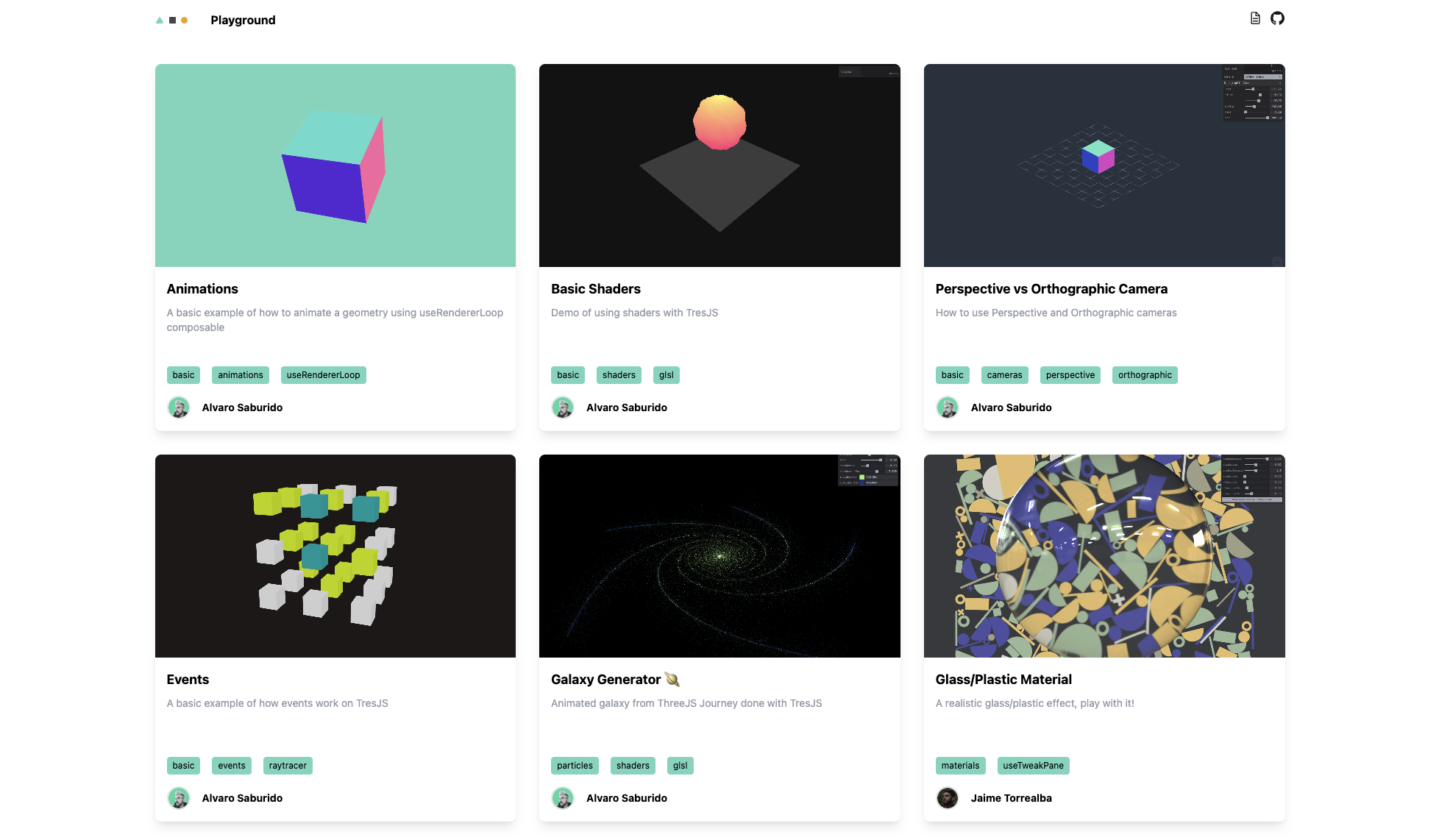Introduction
This is the documentation for version 3 of TresJS. If you are looking for the documentation for the version 1, check V1 TresJS.
npm install three @tresjs/coreyarn add three @tresjs/corepnpm add three @tresjs/coreTypescript
TresJS is written in Typescript and it's fully typed. If you are using Typescript, you will get the full benefit of the typings. Just make sure you install the types for three.
npm install @types/three -Dyarn add @types/three -Dpnpm add @types/three -DVite
If you are using Vite, you have add the following to your vite.config.ts:
import { templateCompilerOptions } from '@tresjs/core'
export default defineConfig({
plugins: [
vue({
// Other config
...templateCompilerOptions
}),
],
}),This is required to make the template compiler work with the custom renderer and not throw warnings on the console. For more info check here.
Try it online
We have a brand new StackBlitz starter to try TresJS online. Check it out:

Playground
We also have a playground where you can try TresJS online. Check it out here.

Motivation
ThreeJS is a wonderful library to create awesome WebGL 3D websites. Is also a constantly updated library that makes hard for wrapper maintainers like TroisJS to keep up with all the enhancements.
React ecosystem has an impresive custom render solution called React-three-fiber that allows you build your scenes declaratively with re-usable, self-contained components that react to state.
In my search for something similar in the VueJS ecosystem, I found this amazing library called Lunchbox which works with the same concept that R3F, it provides a custom Vue3 Renderer. I'm also contributing to improve this library so it gets as mature and feature-rich as R3F.
The only problem is, mixing compilers renderers in Vue 3 is something the Vue community is still working on - see here for more information.
// Example Vite setup
import { createApp } from 'vue'
import { createApp as createLunchboxApp } from 'lunchboxjs'
import App from './App.vue'
import LunchboxApp from './LunchboxApp.vue'
// html app
const app = createApp(App)
app.mount('#app')
// lunchbox app
const lunchboxApp = createLunchboxApp(LunchboxApp)
// assuming there's an element with ID `lunchbox` in your HTML app
lunchboxApp.mount('#lunchbox')So I was inspired by both libraries to create something that wouldn't require creating a custom renderer but intelligent enough to generate Vue components based on the ThreeJS constructors with 0-to-none manteinance required .three:latest. That's TresjS v1
Although v1 was a decent solution 😄, it has some limitations that would only be solved by creating a proper custom renderer. After several POCs, I decided to create a new version of TresJS that would be based on a Vue custom renderer but saving the user to do any weird stuff. That's TresJS v2.
To learn more how to migrate from v1, check the migration guide.